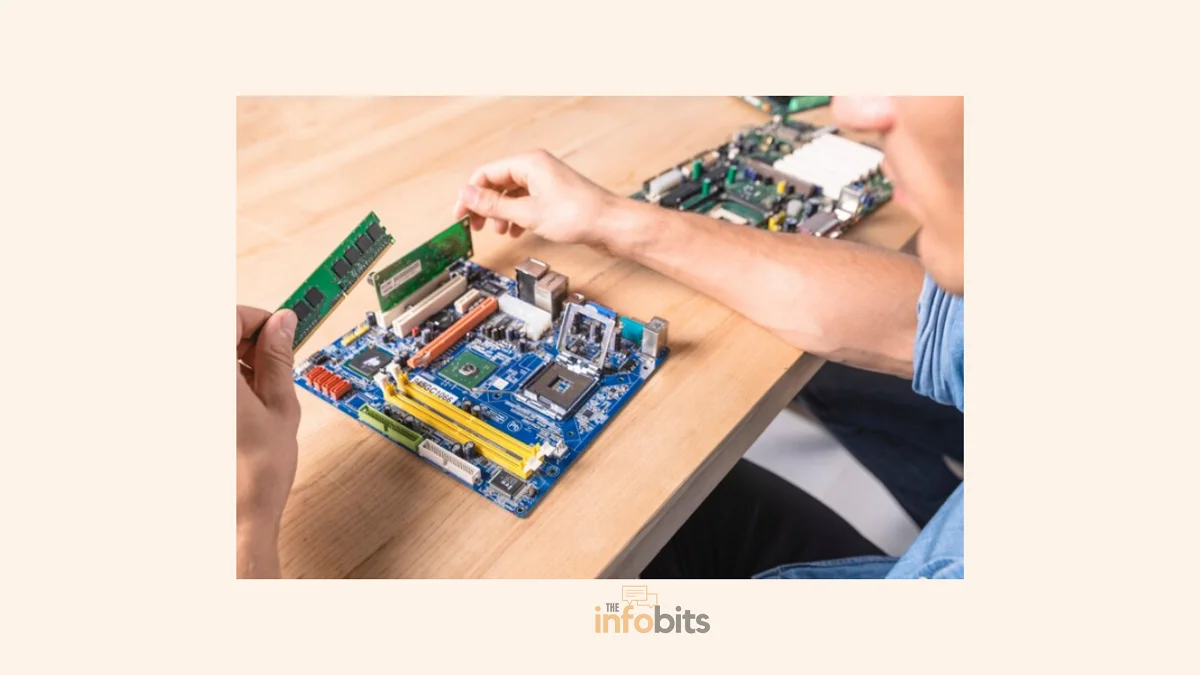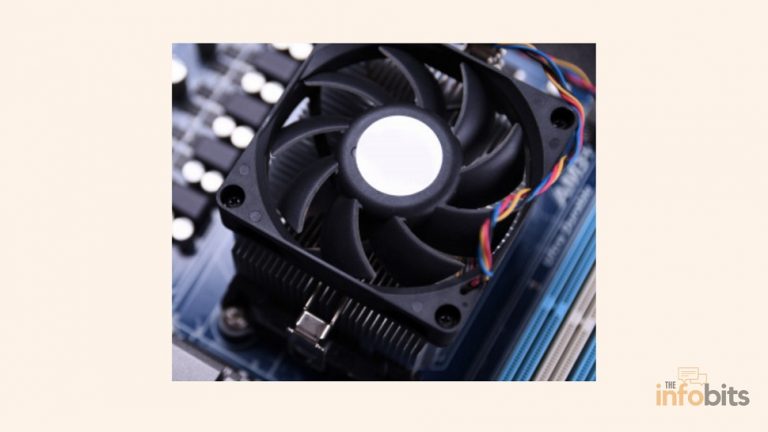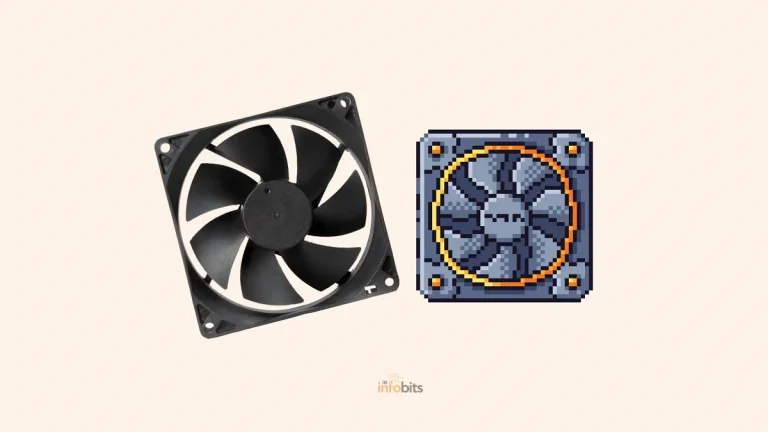Can You Mix RAM Brands or Sizes on a PC or a Laptop?
RAM (Random Access Memory) is a critical component of a computer or smartphone.
RAM’s function is to keep track of CPU processes for a predetermined period and to store temporary files in a faster memory space so that the CPU does not have to access them and repeat the process every time.
However, there are some questions about RAM, and the main one is: Can you mix RAM brands or sizes?
When it comes to practical scenarios, there are a lot of similar questions, like, “Can you mix and match RAM together?” “Can you use two different brands of RAM?” “Can you mix RAM sticks?” or “Can you use different RAM sizes together?”
The meaning of all these questions is the same, and the immediate answer is a resounding yes.
You can mix and match different RAM brands and sizes. However, mixing different RAM modules will not guarantee the highest performance from your PC. To get the most out of your system, you must understand certain concepts, which we have discussed in this article.
When you are mixing RAM brands or sizes, your system will continue to function normally.
Most of the time, as long as both RAM modules are of the same generation, such as DDR3 (Double Data Rate Gen 3), DDR4 (Double Data Rate Gen 4), or DDR5, they will work, though compatibility issues may arise.
But you will not be able to use RAM from different generations on the same motherboard.
However, for the best performance of your PC or laptop, you must take certain precautions when mixing different RAM modules, even if they are of the same generation.
So let us go over the subject in depth.
Can You Mix RAM Brands?
This is a common question that many computer users have when assembling or upgrading their systems. Most laptops and desktop computers have at least two RAM stick slots.
Nowadays, the vast majority of motherboards include four RAM slots. There’s a mistaken belief that you can’t mix RAM brands or use different RAM sizes at the same time.
Simply put, this is not true. So, is it possible to mix RAM brands and different stick sizes?
Yes, as previously stated, you can mix and match RAM brands, RAM sizes, and even RAM with different frequencies. However, matching and mixing different RAM modules is not recommended for optimal system performance.
For best system performance, it is always recommended to combine RAM sticks of the same brand, size, and frequency.
However, there is a simple reason why changing RAM sizes isn’t always the best way to improve system performance. This is because RAM is made up of various components that work together to ensure that it runs efficiently.
RAM sticks from various manufacturers are frequently made up of various components. Even RAM from the same manufacturer may be built with a variety of components in different batches.
This variation in manufacturing components may result in decreased system performance. However, if you are not a heavy user, you may not notice this performance degradation.
As a result, even if the specifications differ, you will be able to use the RAM together.
This means that if the RAM modules’ frequency and speed differ, your system will use the module’s lowest RAM settings, reducing processing efficiency. As a result, when mixing different brands of RAM, make sure they have the same frequency, speed, and latency.
On the plus side, combining RAM (brands) will still give you a performance boost when multitasking and using memory-intensive applications like Photoshop. This is because when we add the RAM module, the total RAM size increases.
Different RAM sizes (mixing RAM sizes) can be used together, but they must have the same voltage and controllers to function properly and be compatible with the motherboard. For this reason, it is usually recommended to use the same model in all slots.
Combining RAM modules with different clocks, brands, speeds, and sizes has also resulted in rare problems.
Even though BSOD, auto restarts, and major crashes are hardly observable, improper RAM combinations should be avoided.
As a result, it is preferable to use RAM modules of the same size from a single manufacturer (same model).
Related: Everything You Should Know About RAM vs. VRAM Comparison
Can You Mix RAM with Different Speed, Frequency, or Latency?
You’re probably aware of your phone’s or computer’s RAM capacity. When someone claims that their computer has more RAM, you naturally believe that it will run faster.
However, this is not always the case. The capacity or size of the RAM isn’t the only factor to consider. RAM performance is affected by several factors, including speed and frequency.
RAM, like a CPU, has clock speeds. The faster the clock, the more functions can be completed in a single second.
RAM sticks with 2400MHz or 3000MHz frequencies are common, but 3200MHz and 3600MHz are becoming the standard for high-end computers.
Can you mix RAM speeds?
It is entirely possible to run two or more RAM modules at different speeds. However, just as when combining brands, when you mix RAM speeds, you will default to the lowest-performing RAM modules. Mismatched RAM speeds are one issue you may face here, and they can be harmful in two ways.
First, suppose your RAM operates at 2000MHz but your motherboard only supports 1333MHz RAM, the 700MHz difference between the two speeds will be ignored by your system and will provide no benefit.
Second, if you combine different RAM module speeds, both sticks will operate at the slowest module’s speed. As a result, if one stick of RAM runs at 2400MHz and the other at 3600MHz, both sticks will run at a slower speed, wasting the faster RAM’s potential.
Consider a pair of 16GB CORSAIR DDR4 3200 MHz RAM modules with a 16 CAS latency. The other set of RAM modules is a 16GB TEAMGROUP T-Create Classic DDR4 2666 MHz with a 19 CAS latency.
If both modules are installed in the same PC, they will be reduced to the lowest common denominator, i.e. (2666 MHz) speed and (19 CAS) latency.
The average computer user will not notice a significant difference in RAM between 8 GB and 16 GB.
However, upgrading to a faster RAM module with the same 8GB capacity may result in significant performance gains.
So, depending on how you use your system, you must choose which is more significant.
Can You Mix RAM Sizes?
RAM performs well when it is paired with compatible hardware. For optimal performance, your RAM should use the same voltage, and their separate controllers should communicate well with each other and with the motherboard.
As a result, it’s best to use the same RAM model across the board. This isn’t to say you can’t mix and match RAM sticks of various sizes.
You can still install a new 8GB stick if your first stick is 4GB, for example. When you enable dual-channel mode (also known as flex mode), it will function as two 4GB sticks running at full speed side by side.
The remaining 4GB on the new stick will be used in single-channel mode. Overall, it isn’t as fast as using two identical sticks, but it is faster than what you had before.
We’ve seen that the extra piece of the larger RAM module will run in single-channel mode on Intel motherboards with Intel Flex mode enabled, while the initial 4GB block on the new 8GB module will operate in dual-channel mode.
Mismatched RAM sizes are especially prone to causing instability on AMD motherboards.
As previously stated, this is also true for RAM frequency and speed. Your RAM sticks will communicate at the frequency of the slowest stick by default.
Is it necessary for RAM sticks to be compatible? Is it required to use the same RAM brand in each slot? No, though it would be preferable if they did.
As a result, we can conclude that for optimal performance, always use RAM sticks from a single manufacturer that are the same size and frequency.
That is, if you require 8GB of RAM, you can use either a single 8GB stick or two models of 4GB sticks from the same manufacturer.
How Much RAM Do You Need for Your Computer for Optimum Performance?
4GB is the minimum recommended RAM size for normal users, while 8GB is the minimum recommended amount for peak performance.
Although 16GB systems are recommended for gamers, PC enthusiasts, and professionals who work with graphics, video, or sound, 32GB systems are becoming more popular.
The majority of programmers write their code in such a way that the app only uses a certain percentage of RAM. The same required percentage will result in a larger application size if you have more RAM.
It doesn’t mean you don’t need more RAM just because you’re only using 60% (or whatever small percentage) of your total RAM capacity. Your typical tasks might only use 60% of your RAM, leaving the rest for future workloads.
Related: What Are the Things to Consider Before Buying a Laptop
Summary
In general, in the vast majority of cases, incorrectly mixing and matching different RAM sizes, speeds, and latencies will not result in severe problems such as crashing or freezing, but the user will not achieve peak system performance as in the case of a perfect RAM combination.
Aside from that, there could be a mismatch between the RAM sticks and the motherboard.
So, it is always preferable to use a RAM combination from the same brand and model with the same clock speed, frequency, and latency.
Furthermore, depending on how the system is configured and used, you may not notice any change in performance.
The RAM generation (like DDR4 or DDR5) is the single RAM parameter that will always create incompatibility across RAM modules. RAM sticks from different generations will not operate together and are physically incompatible.
Frequently Asked Questions
Does RAM need to be the same brand?
You may combine RAM brands, RAM sizes, and even RAM with varying frequencies. However, it is usually suggested to mix RAM sticks of the same brand, size, and frequency for optimal system performance.
Can I use 16GB and 8GB RAM together?
It is possible, and we’ve done it, but we chose RAM with otherwise extremely comparable specs with considerable care. You’ll have to run the RAM at the lowest common denominator of speed and timings with what you bought.
What happens if you use two different types of RAM
Nothing particular. While you may potentially combine speeds, there is one key point to note your RAM would all operate at the speed of the slowest module.
Can you mix DDR3 and DDR4 RAM?
No. You can’t. Because DDR4 is incompatible with DDR3, a DDR4 DIMM will not fit in a DDR3 DIMM slot.
Does RAM have to match the motherboard?
When selecting a RAM upgrade for your computer, compatibility is the most critical issue. Memory must be compatible with your motherboard to function on your system.
How do I know if RAM is compatible with my motherboard?
The quickest approach to determine what RAM is compatible with your motherboard is by checking your motherboard’s Memory QVL list. As you explore your motherboard’s RAM specs on the manufacturer’s website, look for a page or section labeled “Memory QVL” or “RAM support list”.
Can you mix RAM of the same speed?
You can combine RAM modules with the same speeds. However, try to utilize identical models from the same manufacturer.
What happens if you mix RAM size?
When combining RAM sizes, nothing happens and there are no serious concerns as long as the frequency, brand, latency, and speed of your RAM modules match.
Can I use 4GB and 8GB RAM together?
Yes, you may utilize 8GB RAM alongside 4GB RAM in the same machine, although it is preferable to have RAM of the same size, specifications, and brand.
Is it OK to mix different brands of RAM?
Mixing different brands of RAM is not an issue for regular use. However, it is preferable to have RAM of the same manufacturer and configuration for optimum performance.
Can I mix RAM speeds?
It is not an issue to combine RAM modules of various speeds. However, the effective speed is limited to the RAM’s low speed.
We hope you found this post useful, and please like and follow us on Facebook and Twitter for regular updates.
We also request that you bookmark this page for future reference. Sign up for our free newsletter as well to receive new information in your inbox regularly and stay technically up to date.







